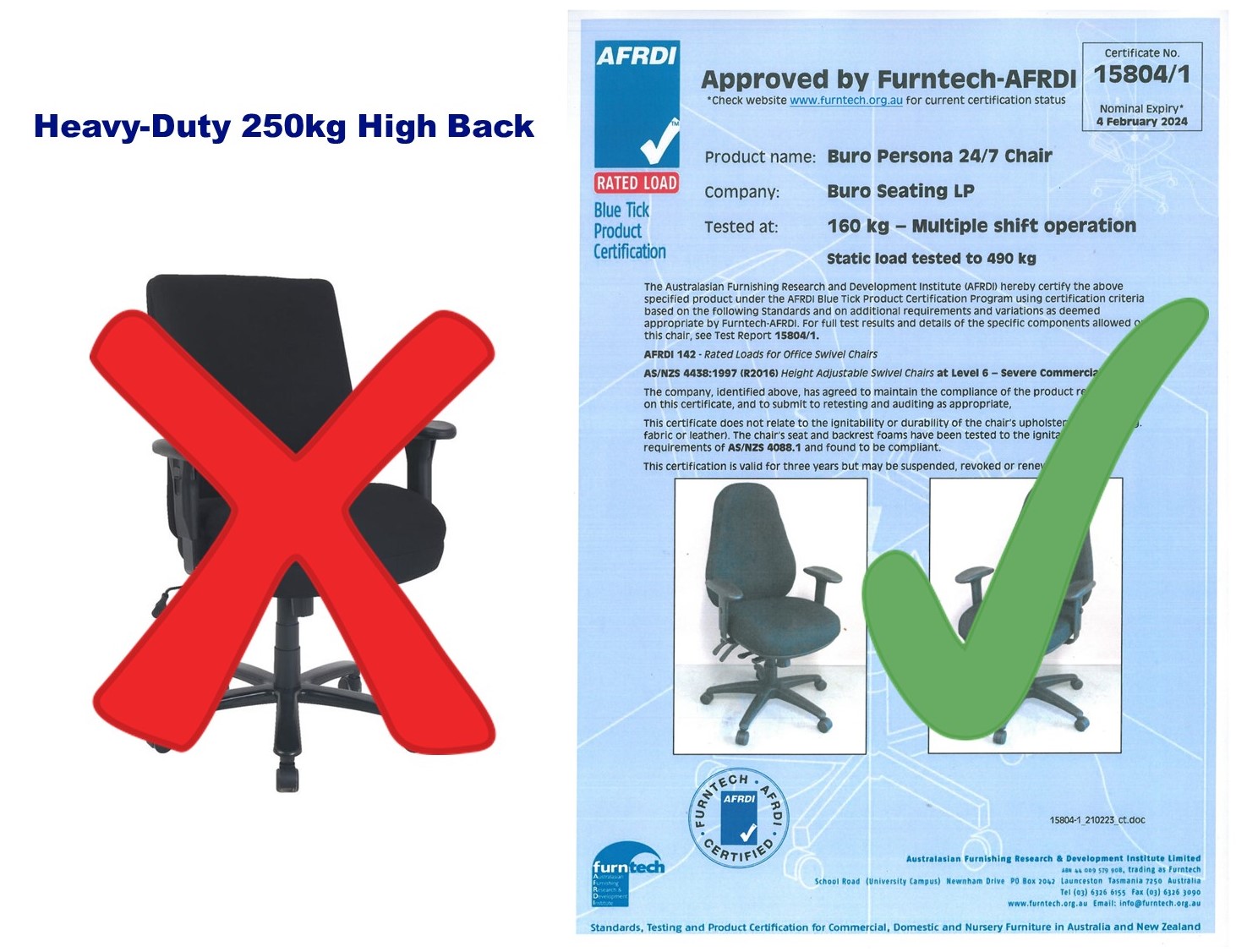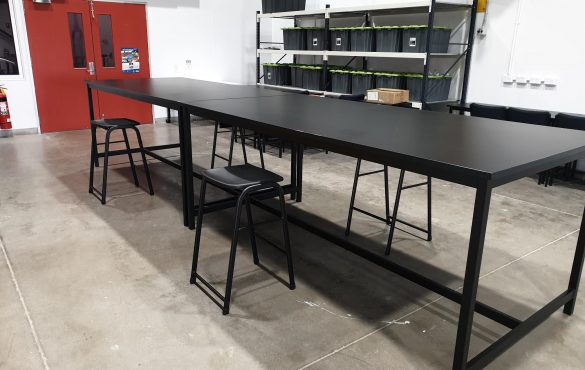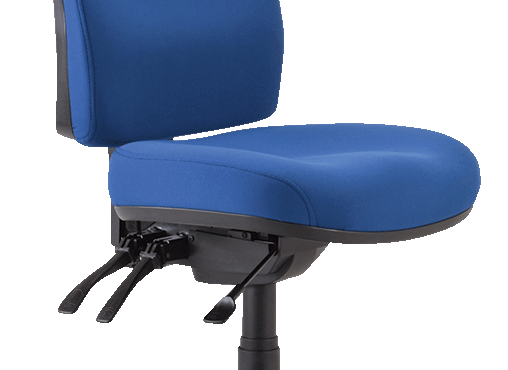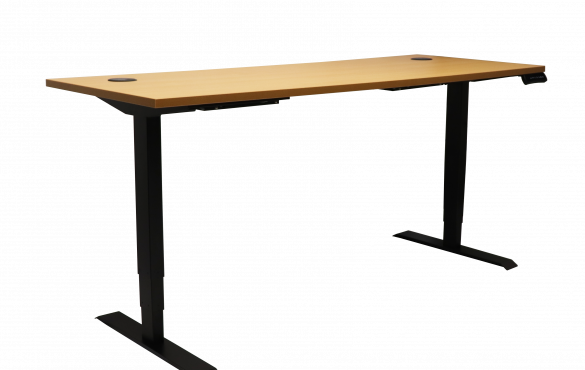Don’t be misled by big chair weight ratings
(all is not always as it seems!)
There’s a lot of advertising talk lately about office chairs having a ‘weight rating’ in some cases of more than 200kg. Some of these ratings are misleading, and light on for science, in Furntech’s opinion. Why is this so? It is the difference between having a mass of 200kg applied once slowly down onto a chair, compared with having the same mass applied with impact for thousands of load cycles.
The difference between a static load and an impact one could be likened to having someone rest a hand on your cheek, compared with having that same person punch you forcefully on the cheek – the second application is load plus velocity, and that’s a major difference. AFRDI applies science in stating what loads an office chair can safely handle, and it does this in two ways – through testing and certification of chairs to AS/NZS 4438 and, in the case of chairs where more severe use or high loads are anticipated, through using AFRDI Standard 142, the Rated Load standard.
Chair tested to 4438 suits most people
The first standard mentioned, 4438, tests chairs for strength, durability and stability, along with conformance with ergonomic principles, and also for such factors as potential flammability.
At AFRDI, we have adopted the standpoint that a 4438 chair is appropriate for a user with a body mass up to 110kg – and statistically, this assumption suits around 92.5% of the adult population.
What AFRDI 142 does
AFRDI Standard 142 principally aims at providing chairs for heavier people or more severe duty. When an office chair is to be used in a public place – where it’s clearly impractical to sort potential users by body mass – AFRDI recommends that chairs tested and certified under the AFRDI Rated Load standard be used. It’s also a common-sense approach to avoiding potential injury and liability claims, and as a bonus, AFRDI Rated Load certified chairs will generally last longer as well.
The AFRDI Rated Load standard tests chairs at two loading points – 135kg and 160kg, and then further qualifies their performance under testing by separating them into those intended for normal daily shift use (SS), and those intended for around the clock heavy duty operations (MS).
Testing is severe
While 135kg and 160kg are the loading points that will appear on chair certificates, in fact they will have been static load tested at between 400kg to 500kg, to simulate the peak loading (impact loading) that occurs when someone sits down suddenly. A new AFRDI Rated Load standard (AFRDI 151) will soon be able to test bariatric fixed height seating – chairs for very heavy people – right out to 300kg.
Assessing the risk
Let’s return to two key words – safely handle: the ability of an office chair to cope with a certain load. If you think there’s a risk that an office chair may fail because it’s being used by a heavy person, you should trust the AFRDI chair rating system, particularly if you are catering for a person whose body mass is greater than 110kg – and that’s quite a few in the workforce these days. If you are presented with a chair and a load rating statement, ask to view the certificate or test report from an accredited laboratory that confirms the rating. Check also that the certificate is current – chair specifications can change. If you are tendering, make sure purchase agents compare like with like when accepting chair certificates. We say: buy office chairs with your head, considering the facts, and don’t be confused by exaggerated ‘load rating’ claims.

#chair #furniture #interiordesign #design #table #homedecor #interior #furnituredesign #sofa #chairs #home #decor #livingroom #chairdesign #art #architecture #wood #interiors #decoration #designer #armchair #gossipgirl #vintage #blairwaldorf #homedesign #chuckbass #office #love #luxury #bhfyp






